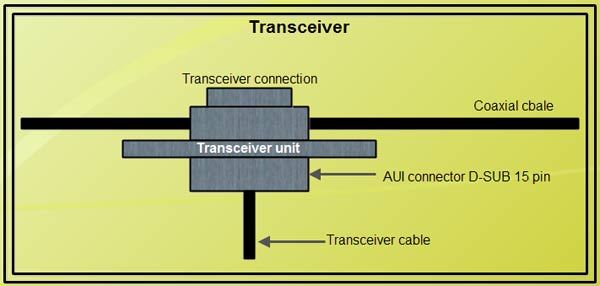The transceiver exchanges data signals handled by the NIC and electric signals sent over a transmission line. A I5-pin D-SUB connector is used to connect transceivers and transceiver cables. Multiport transceiver supports more than one NIC.

[/vc_column_text][/vc_column][/vc_row]
 Dinesh Thakur holds an B.C.A, MCDBA, MCSD certifications. Dinesh authors the hugely popular
Dinesh Thakur holds an B.C.A, MCDBA, MCSD certifications. Dinesh authors the hugely popular